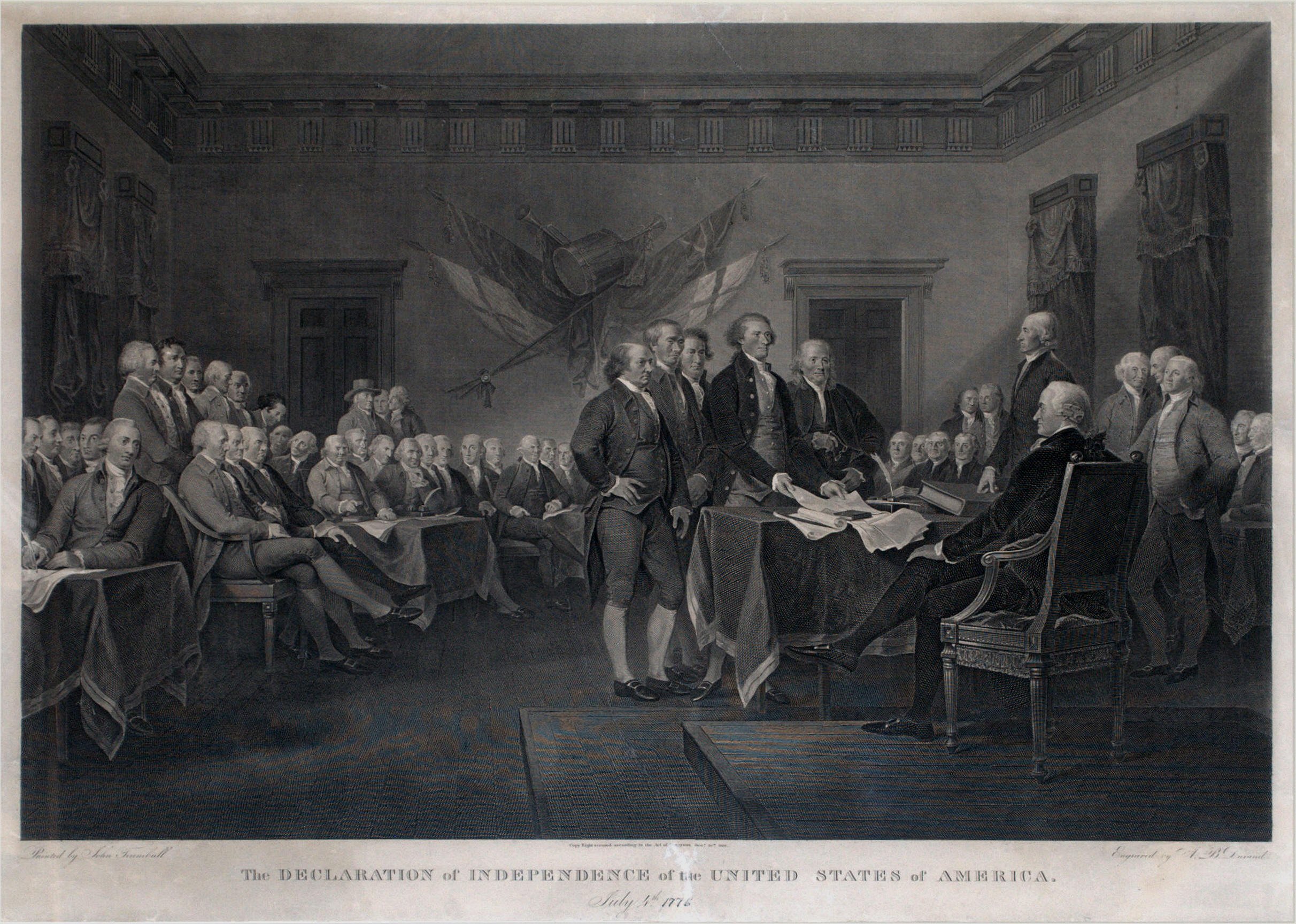
Of the many paintings
produced by American artist John Trumbull (b. 1756, d.
1843), his painting Declaration of Independence,
which was commissioned in 1817, purchased in 1819, and
placed in the rotunda of the United States Capitol in
1826, is his most prolific and widely known image.
The painting depicts 42 of the original 56 signers of
the Declaration, as well as several delegates who
participated in the Continental Congress but did not
sign the document. Seated along the periphery are
the delegates, focusing intently on the committee who
drafted the Declaration: John Adams, Benjamin Franklin,
Roger Sherman, Robert Livingston, and the primary author
of the Declaration of Independence, Thomas Jefferson.
They stand before John Hancock, the President of the
Constitutional Convention who is famous for his bold
first signature.
Of the many engravings
made of Declaration of Independence, this is the
first and rarest. American artist Asher B. Durand
(b. 1796, d. 1886) who is most famous for his later
painting such as Kindred Spirit, began his career
an engraver, with this print being his first major work.
The extraordinary quality of the engraving, and its
exceptionally large size for an engraved work of the
time, firmly established Durand's reputation as one of
the finest engravers in the country and greatly
propelled his career. Despite the date of 1820
appearing on the engraving itself, the engraving
actually took Durand three years to complete, and it was
published in 1823, shortly after John Trumbull finished
the painting and before the painting was finally placed
into the Capitol Rotunda. A copy of the same
engraving was presented to Thomas Jefferson himself
before his death in 1826, and it hangs prominently in
Jefferson's home at Monticello. The lifespan for
an engraving plate of this type is typically in the
range of 200 prints, before wear to the plates causes
degradation of the print quality. Thus very few of
these prints survive today. This particular print
was also found with the original key, which was also
engraved by Durand and accompanied the engraving when it
was produced. The key contains facsimile
signatures for each of the signers present in the
painting. Beyond the great rarity of the print
itself, the key is even more scarce. To date, this
is the only example of the key that I have been able to
locate. The key would have likely become separated
from the engraving over the course of the last 190
years, perhaps being discarded or pasted to the backs of
frames, which were then lost or damaged. Later
engravings of the scene in the mid- and late-19th
century would attempt to capture the scene on the scale
of Durand, but none would match the quality and
brilliance of Durand's achievement.
|

